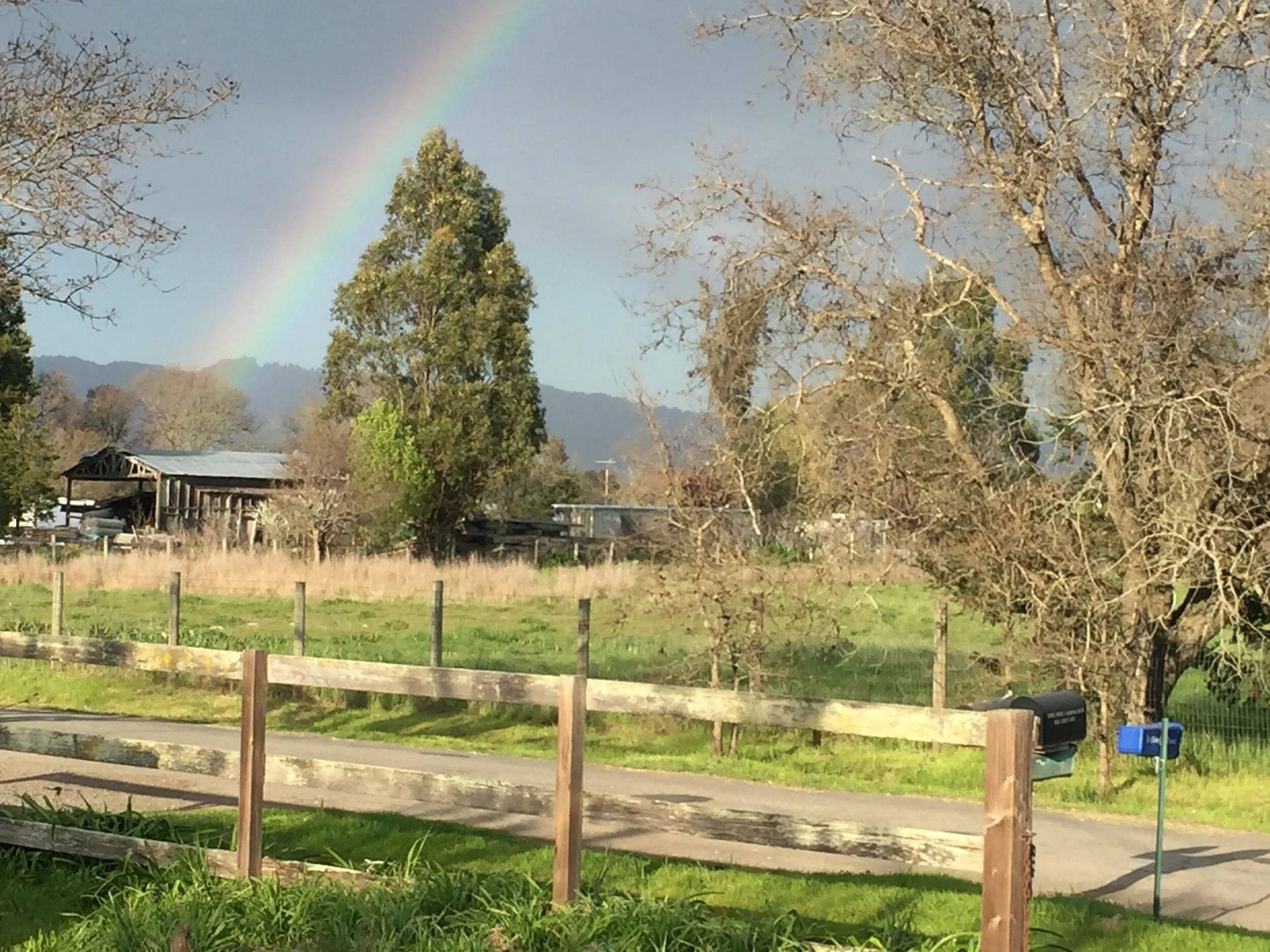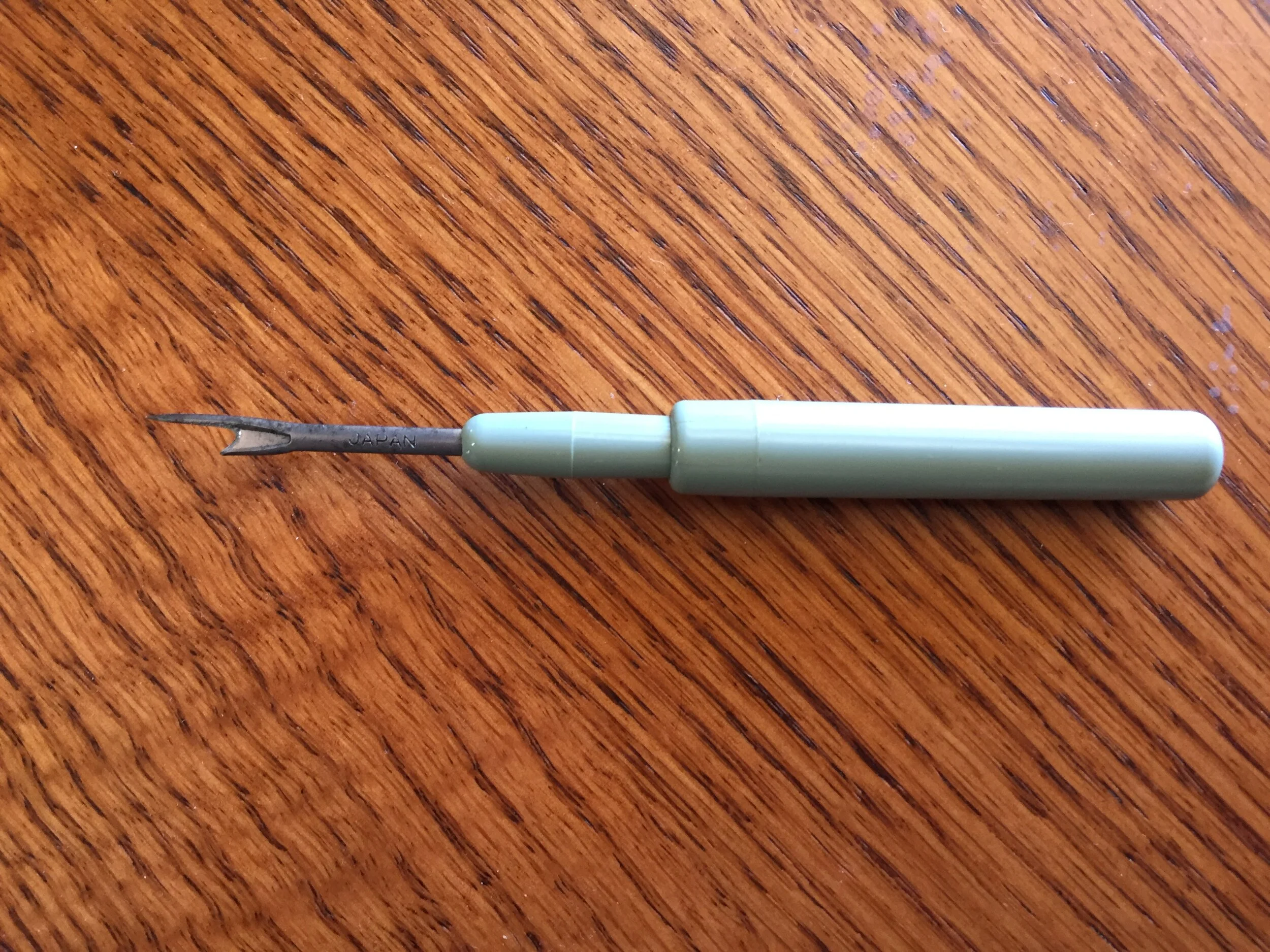Heeding the call for homemade face-masks,
I find my old sewing-machine
where I parked it, ten years ago,
in the wreckage of a storage shed—
nestled in a basket like a brooding hen,
the heavy plastic bag I’d put over it
shredded by time and rats.
Wearing rubber gloves, I carry my old Kenmore
onto the porch, where I sit in the glorious last light
of the late afternoon
filled with thunder clouds in the north
and lit by a rainbow, closer by.
Under the benediction of that sky,
I clean off the dust and dirt
and cobwebs till the hard plastic
gleams again,
And I remember my emotional connection
to this sewing machine
and the ones that came before.
That first Home Ec class in junior high,
when all the girls were assigned to make an apron.
Afterwards I asked to take a summer course
at the Singer Sewing Machine store,
and made an A-line skirt, learning to align
an army of straight-pins
at right angles to the edges
of the tissue-paper pattern pieces,
affixing them to the fabric—
and how to cut through both with skill.
I learned to love a seam-ripper,
with which one can undo
even the most tightly stitched
mistakes.
That first pair of sewing scissors,
which I have still, a gift from my father,
who, before the divorce,
scratched my name into the stainless steel
with calligraphic precision.
I sewed a paisley Nehru shirt for my brother,
and a plain white linen one for his best friend.
A salmon-colored, crisp cotton dress for my mother,
who later requested a sky-blue, square-necked silk blouse
like the one I confected for myself,
with handmade buttonholes edged by a tiny little
blanket-stitch. Was that before or after I’d
called her a bitch and swore that I hated her?
I wish now that I’d held my tongue,
no matter how egregiously
it seemed that she wronged me.
Throughout those lonely teenage years,
I sat long hours at my machine,
raising and lowering the presser-foot,
guiding the fabric underneath it,
the whir of the motor in my ears,
the needle dipping down and down again,
like a derrick drilling for oil.
I tailored a camel-colored, cashmere suit,
fully lined. Interfacing compelled the lapels
to lie flat against my body.
I learned the trick of making
bound buttonholes, every stitch
invisible.
I could see so well close-up then
with my young eyes.
What was the future I imagined for myself
in these clothes, as I sat and sewed?
Sitting before my machine now,
and cleaning off the grime,
I think about the great-grandmother I never knew,
a tailor by profession, in Russia, under the Tsar.
Tailoring skills came to me naturally,
by way of DNA, before I lost them in the swirl
of marriages and motherhood
and trying to make my way
as a writer.
Too poor to buy the fabrics I favored,
or even the patterns for making them—
those Vogue numbers with their oversized envelopes
and elegant designs, each pattern costing as much
as a silk blouse I could find, if I looked hard
and had luck, in a thrift shop or at the Goodwill.
Pregnant with my first and only child,
I felt sure that I would make all his clothes—
and yet there was no time.
Baby-clothes have the lifespan of a butterfly
before one’s child grows out of them.
I became a hunter for consignment clothes,
some of them never used.
I carried my baby in a sling and then a front-pack—
and, later, in a Swedish baby backpack,
all of which I found at those same stores
while I searched for treasures to array us:
silken velvet caps to keep his head warm
during that first winter when he didn’t yet have
any hair. Always on the lookout
for things that were finely made.
For the Halloween parade at his pre-school,
when Julian was almost four,
he told me he wanted to be Butterfly Man,
a super-hero born in his imagination.
I took out my sewing machine
and fashioned a cape
from some diaphanous golden fabric I found
and used an illustrated field-guide to the butterflies
to paint it all over with Monarchs and Swallowtails
and the iridescent blue wings of Morpho Menelaus.
Edged all around with a golden silk cord,
fastened with an antique cloisonné clasp.
With his abundant blond hair, slim silhouette
and olive-green eyes,
he seemed made for his disguise.
I took my sewing machine out again
nearly every Halloween to transform my son
into whomever he wished to be:
One year he was the Pokémon trainer, Ash Ketchum
(known as Satoshi in Japan). Another year,
more labor intensive for me, he was a furry brown bear.
Both the cape and Satoshi’s blue-and-white jacket
hang in the closet where I keep the clothes
I rarely use.
My son is twenty-seven now, a budding engineer
who models the wind in long, elegant equations
that fill whiteboards and hold the promise
to improve the next generation of wind farms,
and make the world a better place. His golden hair
is brown now, and reaches to his waist.
He lives and studies far away, although we speak
at length at least once a week and, lately, more.
Today I wonder, filled with fear,
will we ever see each other again?
I place the butterfly cape over my shoulders,
hoping to unleash a super-hero
lurking inside of me.
Tomorrow, after I’ve done some more research,
I’ll remind myself how to thread the Kenmore—
and get to work.
Copyright © 2020 by Barbara Quick



